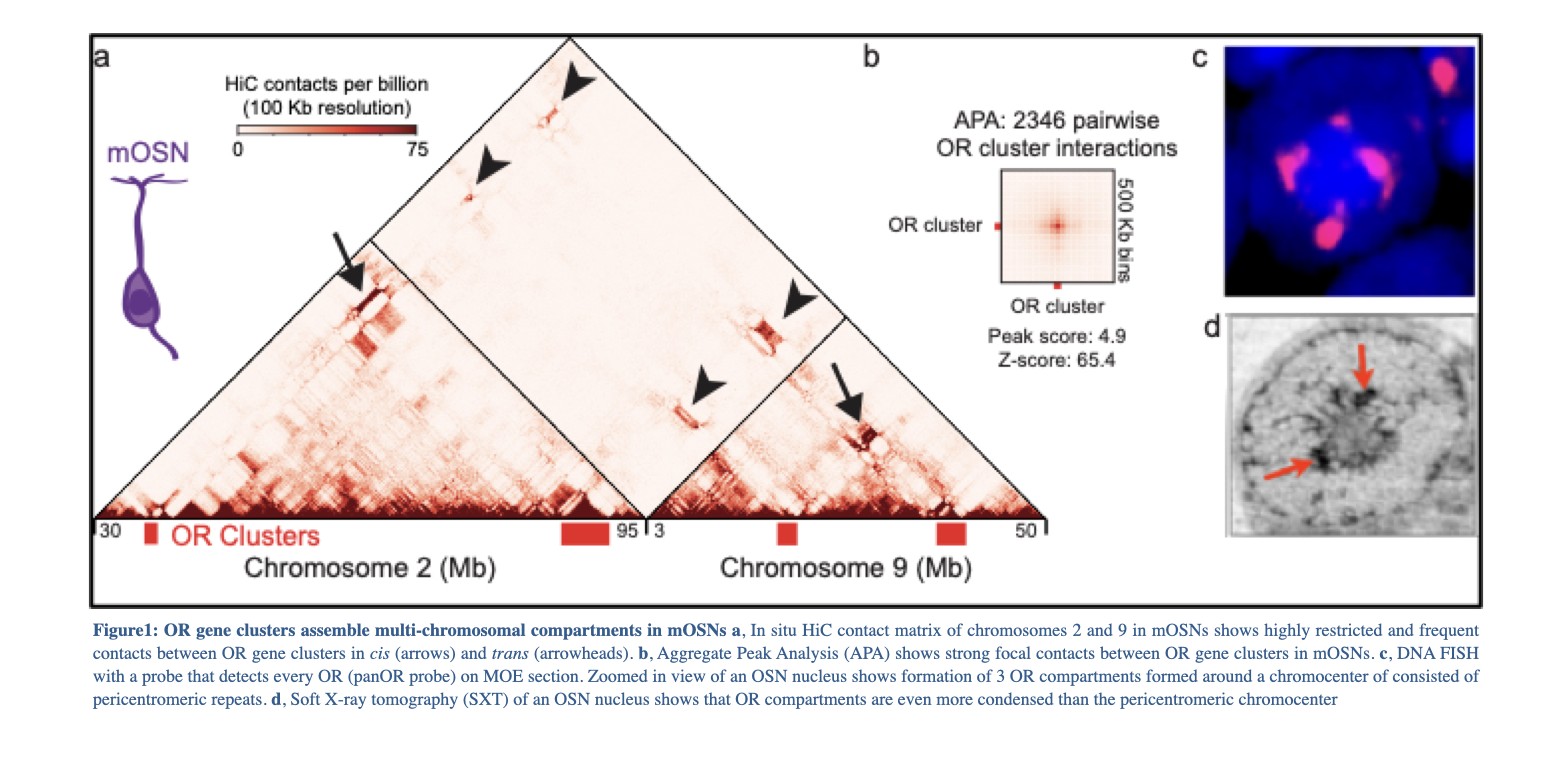Olfaction, the sense of smell, is a critical sense for most animals, which use it to select their mates, to mind their pups, to find food, and to avoid becoming it. Although humans do not rely on olfaction to perform these basic functions, they need a sensitive nose to enjoy life; think how blunt your life is when you cannot smell anything due to a cold and imagine living your whole life like this. To detect an astonishing number of volatile chemicals, or odors, mammals devote ~5% of their genes to odor detection, which is accomplished by olfactory receptor (OR) genes. There are more than 1000 OR genes in the genome, distributed across most chromosomes; yet each olfactory sensory neuron expresses only one of these genes, from only one allele. What is the mechanism that regulates the stochastic expression of only one out of >2000 OR alleles in each cell? Our lab discovered a remarkable mechanism that keeps most OR genes transcriptionally silent, while allowing robust expression of only a single OR allele. Transcriptional silencing is accomplished by formation of constitutive heterochromatin across most OR loci, followed by the assembly of multi-chromosomal OR genomic compartments that preserve the repressed state of ORs by insulating them from transcription factors and RNA polymerase. Singular transcriptional activation is achieved by the formation of an interchromosomal multi-enhancer complex at the periphery of the repressed OR compartment. These converging intergenic OR enhancers, which we named after Greek Islands, associate with only one OR allele, resulting in strong transcriptional activation. Translation of the OR mRNA in the endoplasmic reticulum (ER) induces ER stress, activates translation of transcription factor Atf5, and stabilizes the transcription of the chosen OR, while preventing the subsequent activation of every other OR.
Some major questions still remain: What molecular mechanisms are responsible for the specific interchromosomal association of OR genes and Greek Islands? Why does OR transcription require the assembly of a multi-enhancer hub? What is the structure of the multi-enhancer hub? How is a specific OR allele chosen for transcription? In addition to these fundamental questions we are interested in exploring the cellular and physiological consequences of this unusual regulatory mechanism. For example, if ER stress elicits a feedback signal that locks singular OR choice instead of clearing the proteins that cause ER stress, does this mean that olfactory neurons are unable to properly relieve the causes of ER stress? With generous support from the Zegar Family Foundation we are exploring this question and we are asking if inability to clear ER stress from olfactory neurons explains why Alzheimer’s disease patients experience olfactory deficits. With generous support from Herbert and Florence Irving, we are also exploring how the aforementioned chromosomal acrobatics that culminate in singular OR gene choice affect the integrity of the genome. With support from the Kavli Institute we are investigating post-transcriptional mechanisms that link the stochastic choice of a single OR allele, to processes that influence the identity and circuitry of the olfactory neurons. In collaboration with Dr. Jonathan Overdevest, we are investigating the emerging link between anosmia (inability to smell) and SARS-CoV-2 infection (Covid-19). Finally, with support from the HHMI Faculty Scholar award we are asking if other neuronal types are deploying some of the processes discovered in olfactory neurons.

